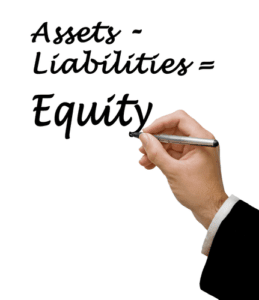
The invoice should include details such as the date, a description of the goods or services, the amount due, and payment instructions. While formal business invoicing tools might offer more features, anyone can create a simple, effective invoice using basic templates or software. The invoice is then sent directly through the invoicing software which may offer additional tracking and payment features. To get easily paid by international clients, ask about their preferred invoice format.
Startup expansion guide: Where should you begin?
A digital invoicing platform like vcita will bring in payments a lot more quickly than going the old-fashioned postal route. If you’ve just launched your freelance business and want to keep things as simple as possible, vcita even has an invoice template with a built-in payment option. Once you sign up, you’re connected to vcita’s payment gateway and can send the completed invoice off to your client, complete with a super-convenient ‘pay’ button. Here it’s best to be as specific as possible, laying the services out clearly, with each on its own line so that the invoice is easy for your client to understand. Going step-by-step like this will also make sure you are not under- or over-charging.
Bonus: Expense reimbursement request

In this final section, you may include additional notes you may have regarding the project. If you’re using a recurring or partial invoice (more on those later), you can include information about future payments and project progress. This section states your preferred payment method, gives your client payment options, and outlines your payment terms and policies regarding early or late payments. Most invoices are due in 30 days, but you can make this shorter or longer depending on your cash flow situation and how badly you need the money.
How to Start Your Own Freelance Business in 8 Simple Steps
- See how our effective invoice solutions can support your business goals.
- A debit invoice, also called a debit memo, is used to request any extra payment on top of the original one.
- Please find attached invoice [invoice number] for [product/service] due on [invoice due date].
- Spend the time to review each line item before sending your invoice.
- Clients fully understand what specific efforts they are financing, which smooths approvals clearing payments owed.
- At the end of the day, the last thing you want to do is confuse a client ready to pay you with a complex pricing table.
For example, if the client overpaid you by $100, you can send them a credit invoice for -$100 (followed up by a repayment). Unless you’re working via a freelancer marketplace (which auto-generates https://www.bookstime.com/ invoices), you’ll have to create and send invoices to each client. To prevent payment delays, ask for confirmation of receipt every time you email an invoice to a client.

You can forgo an invoice for any services delivered in person, however, if neither you nor the client are a VAT-registered entity. But you’re still obliged to provide a payment receipt and an invoice copy should the client request one. Using invoicing How to Invoice as a Freelancer software can make the process a lot easier on you. This will save you time and help you stay organized with your invoices. The software often helps you number and track your invoices and help you keep track of when payment is due or overdue.
Provide Invoice Information
It clearly outlines what you did for them and what they owe you. This type of invoice is a “good faith” agreement to the terms of your service. Your client can see your cost breakdown and decide whether to spend money on your services. You’ve got to do your part when it comes to getting paid on time, and this includes making sure your invoice is on point.
- Companies often have specific steps you need to follow, like an accounting email address to send invoices to.
- I’ve had to apologize for late deliverables, the same as a client had to apologize for completely missing an invoice in their crowded inbox.
- A freelancer invoice is a document you send to a client to request payment for the provided services.
- But as your business grows, you’ll need a more advanced numbering system to keep yourself organized.
- You get to choose when you work, which clients you work with, and which gigs you don’t want to do.

You can include an expiration date to help encourage them to return soon. Except in this case, you’re only providing the per-project rate, no unit. It’s not uncommon for invoices to get lost so this will help ensure your invoice makes it to the right hands. Or a specific person in the finance department referred to by your client. Be sure to include your name, address, email, phone number, and any other forms of contact you wish to offer. If you don’t have a business name, you can simply put your own name—whatever your client knows you by.
Contact details
- When you’re billing a client, you need to supply a lot more detail.
- While you might have given your client a quote before you started working on their project, there are two major differences between a quote and an invoice.
- Unless you’re working via a freelancer marketplace (which auto-generates invoices), you’ll have to create and send invoices to each client.
- And if your invoice doesn’t have the correct details, or if it isn’t formatted properly with reasonable payment terms and clear information, you might wait even longer.
- Including both totals makes the discount clearer and reminds your client of the special offer you’ve given them.
- Your client can see your cost breakdown and decide whether to spend money on your services.
- Your numbering system should be such that no two invoices, even for different clients, have the same number.
Dealing with difficult clients and late payments
